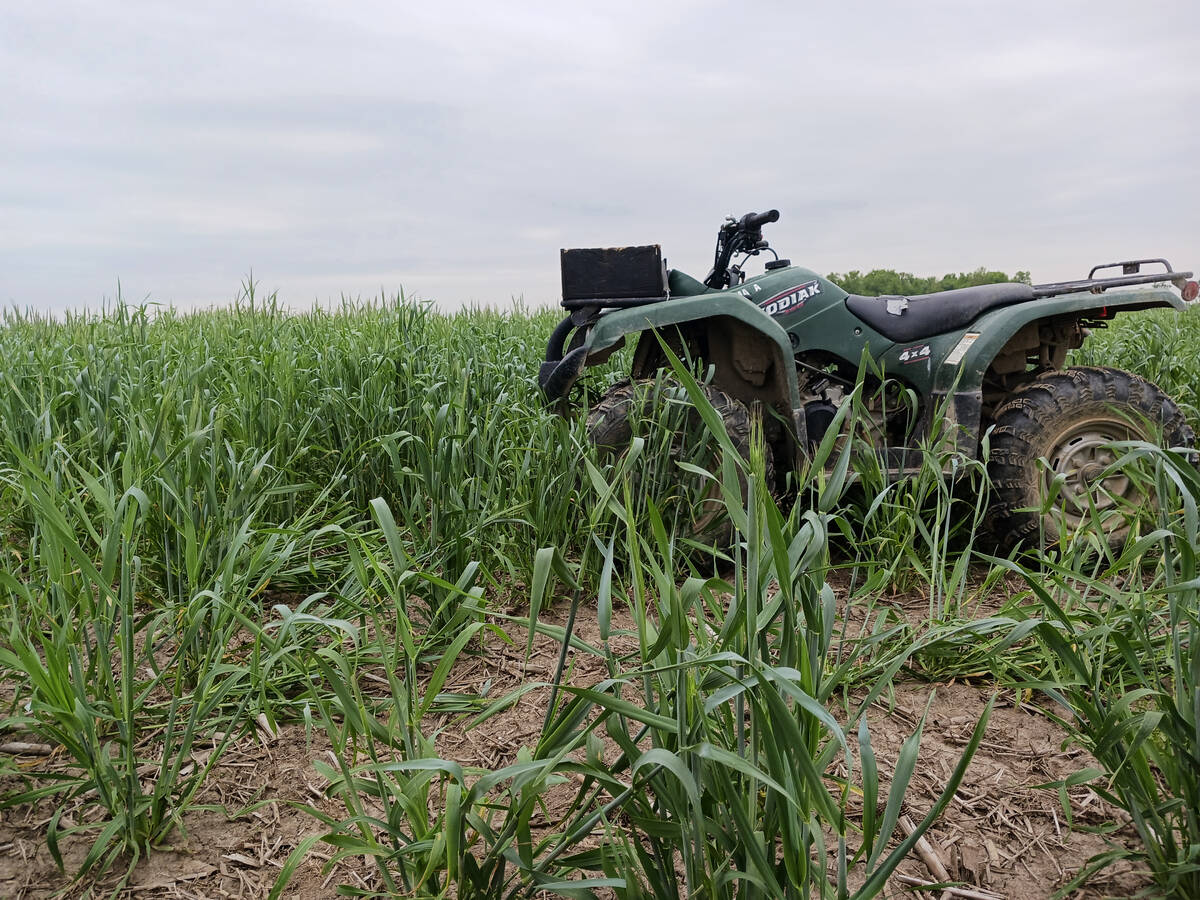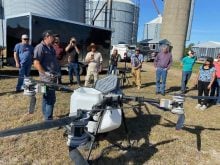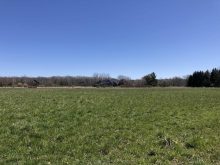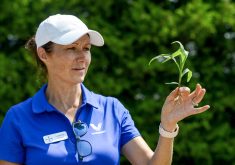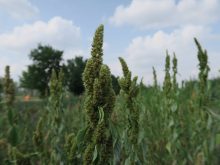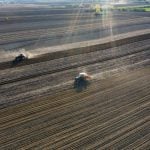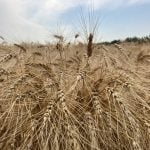Before venturing into the world of cover cropping, farmers should ask themselves: “What are you trying to accomplish?”
That’s according to Lee Briese, 2025 International Certified Crop Advisor of the year and a crop consultant for Centrol Crop Consulting in Edgeley, N.D.
Why it matters: Cover crops offer many benefits but growers need to know what they want to achieve by planting them.
Briese is a big fan of cover crops. They can be used to accomplish soil diversity improvements, break up compaction, mitigate erosion and weed pressure, and many other useful agronomic tasks.
Read Also
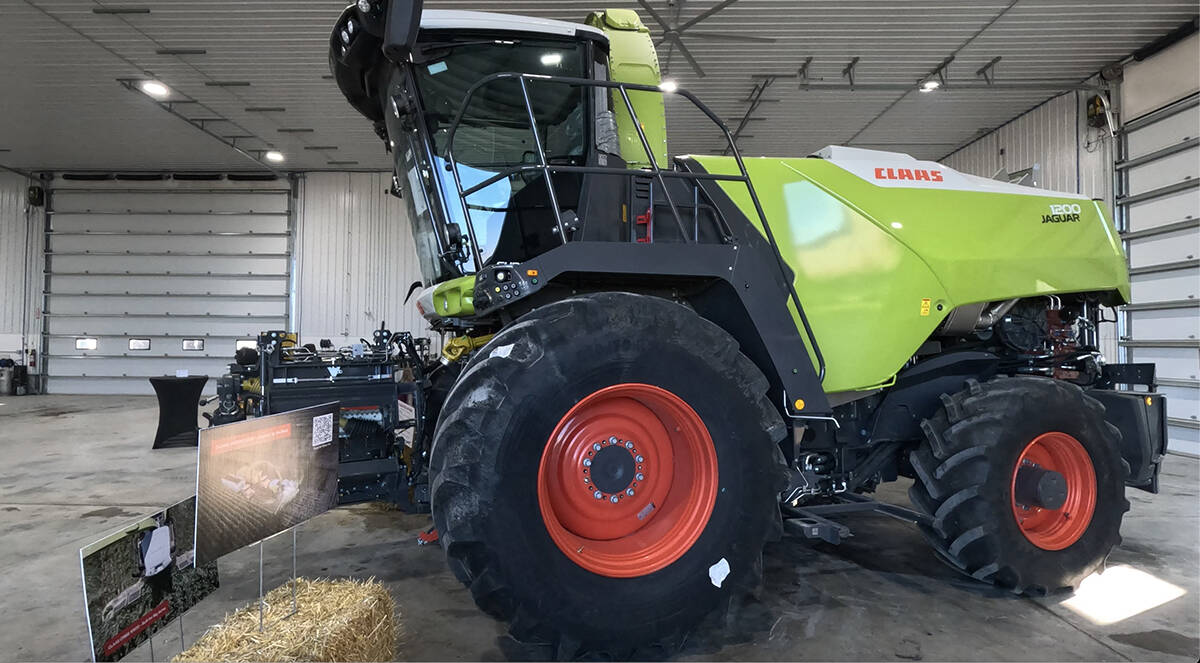
Claas brings 1000 Series SP forage harvesters to Canada
In mid-August, Claas unveiled its new line of Jaguar forage harvesters at an event in Visalia, California, deep in the heart of that state’s dairy region.
But planting a cover crop without clear goals in mind can lead to unnecessary expense, production complications, and general dissatisfaction.
Cover crops are, according to Briese, “a set of tools” designed for specific situations.
“More on versus moron” — or the idea that a smaller mix of species is often more valuable in accomplishing specific goals while reducing the cost of the cover crop — is his general modus operandi, and is how he encourages growers to accomplish goals while saving on seed costs for cover crops that may be outcompeted by others in mix.
“Pick cover crops that are going to be doing something specific for your farm, targeting a goal, that fit into your system and you have a good idea that you’re going to have a high percentage chance with based on your herbicide program. You don’t necessarily need more,” says Briese, speaking during a presentation to the Ontario Soil and Crop Improvement Association and Ontario Certified Crop Advisor Association earlier this month.
“I typically recommend two to five different species, but each of those species I’m bringing to the table for a specific reason. This goes back to the tool analogy. If you’re broke down in the middle of the field, you don’t haul all your tools to the middle of the field. You bring the tools you think you’re going to need to fix that.”
Whatever the cover crop or cover crop mix, one of the first considerations is the reality on the ground at your farm. For example, what equipment is available and what rotational opportunities exist.
“For example, here with hard red spring wheat, it is not a good plan to have rye as your main cover crop. That’s part of your rotation. That rye will volunteer. It will be in your system,” he says.
“Now, that doesn’t mean you can’t manage it. You can. But you need to be ready for that,” says Briese, adding oats might make a good substitute in such a circumstance.
He also stresses the need to fit cover crops to existing herbicide programs, rather than the other way around, since the cover crop species being employed may be vulnerable to the chemistries applied.
“There’s no one way to do this, and these things really need to be tailored to each individual system and what you’re trying to accomplish. One of the easiest ways to get a good feeling for how the herbicide program you have or need to use in that field for that specific year is to cross-reference families of cover crops with your weeds and your cash crops.”
Keep pests, nitrogen needs in mind
On fauna rather than flora, Briese says cover crops add to ecosystems diversity, meaning “you’re adding more food sources for all kinds of different organisms in the environment, including pest organisms. I think its really important to be cautious of this if you have specific pests, significant problems in your neighbourhood. You don’t want to give them food to proliferate and multiply.”
However, he also reiterates pest and beneficial insect populations increase and decrease in cycles, in response to one another. Temporarily higher pest numbers are thus not necessarily an acute emergency.
Holding reasonable expectations is critical. If nitrogen fixation is the goal, for example, remember it can take up to six weeks before legumes begin sequestering the atmospheric nutrient, and that sequestration itself will benefit the subsequent crop rather than any immediate one.
It is, in essence, “an inheritance, not an allowance,” says Briese. Quoted nitrogen benefits for a given cover crop also refer to amounts derived from full stands. If a stand of alfalfa only covers a portion of potential stand, but you still expect full nitrogen benefits, “you’re going to be disappointed.”
Cover crop growers also benefit from constant evaluation.
“Keep weather in mind. What was your weather like? What was your weather throughout the entire time that cover crop was growing? Was it planted dry and it didn’t get started, didn’t get established? That’s part of success. Did you have too much growth? Was it too wet? Was it too hot? All these things matter, and be honest with it,” says Briese.
“The other way to be honest — maybe you spent $30 an acre on a cover crop mixture and it really didn’t give you what you wanted. You want to believe it, that you spent your money where you did, but maybe you didn’t get enough value out of that to justify that cover crop.
“Maybe I just need a couple species to do what I need them to do.”


